
-
Find the right food for your petTake this quiz to see which food may be the best for your furry friend.Find the right food for your petTake this quiz to see which food may be the best for your furry friend.Featured products
 Puppy Food
Puppy FoodHill's Science Plan Puppy Multipack Wet Dog Food with Chicken & Beef are complete premium pet foods for growing puppies from weaning until 1 year old and for pregnant and nursing dogs. Your puppy will love these deliciously smooth and savoury minced loaves, formulated for balanced nutrition and overall health.
Shop Now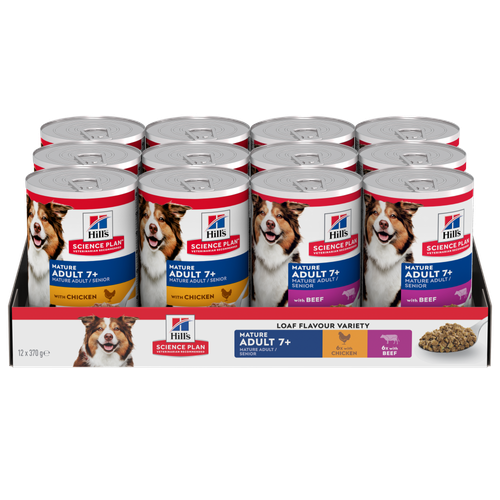 Mature Adult Dog Food
Mature Adult Dog FoodHill's Science Plan Mature Adult Multipack Wet Dog Food with Chicken & Beef are complete premium pet foods for mature adult dogs from 7 years. Your dog will love these deliciously smooth and savoury minced loaves, formulated to deliver the appropriate amount of energy to support the needs of adult dogs.
Shop Now Adult Wet Dog Food with Beef
Adult Wet Dog Food with BeefHill's Science Plan Adult Multipack Wet Dog Food with Chicken, Beef & Turkey are complete premium pet foods for adult dogs from 1 year. Your dog will love these deliciously smooth and savoury minced loaves, formulated for balanced nutrition and overall health.
Shop NowFeatured products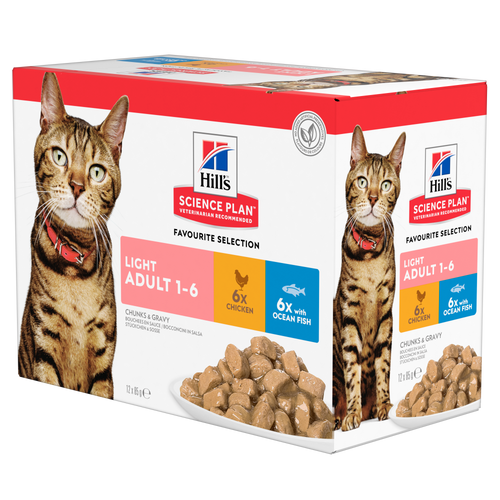 Light Adult Multipack Wet Cat Food with Chicken & Ocean Fish
Light Adult Multipack Wet Cat Food with Chicken & Ocean FishTender chicken chunks in gravy for cats, with L-carnitine and fewer calories for ideal weight management. Packed with high-quality protein, omega-6s, and vitamin E for shiny fur and healthy skin.
Shop Now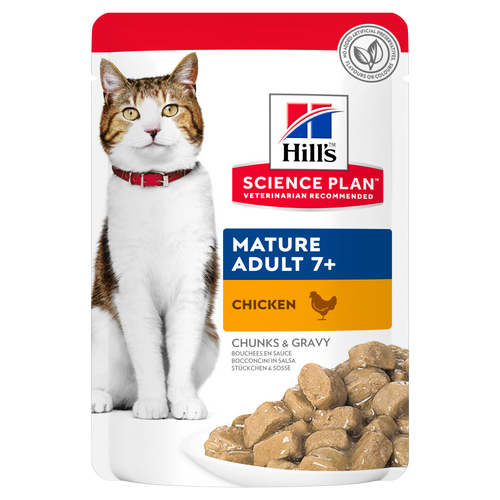 Mature Adult Wet Cat Food with Chicken
Mature Adult Wet Cat Food with Chicken
Tender chicken chunks in gravy for mature adult cats. Made with easy-to-digest ingredients, high-quality protein for lean muscle maintenance and antioxidant vitamins C+E for optimal health.
Shop Now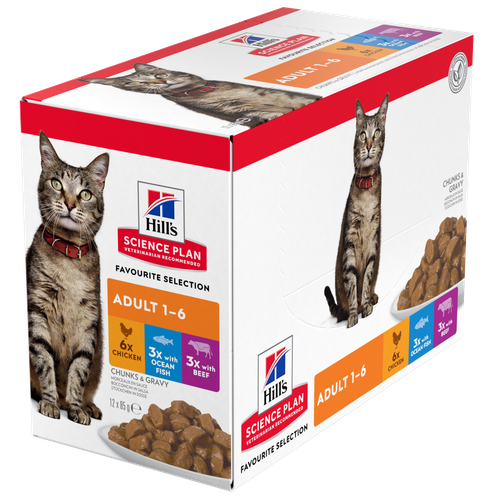 Adult Multipack Wet Cat Food with Beef, Ocean Fish & Chicken
Adult Multipack Wet Cat Food with Beef, Ocean Fish & ChickenTender chunks in gravy for cats, with high-quality protein to maintain lean muscle. With vitamin E and omega-3s & -6s for healthy skin and balanced minerals to support healthy vital organs.
Shop Now -
Dog
- Dog Tips & Articles
-
Health Category
- Weight
- Food & Environmental Sensitivities
- Urinary
- Digestive
- Joint
- Kidney
-
Life Stage
- Puppy Nutrition
- Adult Nutrition
- Senior Nutrition
Cat- Cat Tips & Articles
-
Health Category
- Weight
- Skin & Food Sensitivities
- Urinary
- Digestive
- Kidney
-
Life Stage
- Kitten Nutrition
- Adult Nutrition
Featured articles The Incredible Science Behind Your Pet's Microbiome
The Incredible Science Behind Your Pet's MicrobiomeLearn what your pet's microbiome is, how it contributes to your pet's gut and overall health, and why nutrition is important in maintaining healthy microbiomes.
Read More Show some love with wet foods: a great choice for pets with health issues
Show some love with wet foods: a great choice for pets with health issuesShow some love with wet foods: a great choice for pets with health issues.
Read More The Right Diet For Your Pet
The Right Diet For Your PetIn people, the right diet is very important. If you are eating the wrong way for your metabolism, activity level, age and lifestyle you could end up with health issues.
Read More -


It can be hard to know whether or not your cat is too skinny. According to International Cat Care, 39 to 52 percent of U.K. cats are overweight. Because so many of the cats we see are overweight, a normal weight may seem abnormally thin to their pet parents. It can also be hard to tell whether your cat is skinny if they have long hair or a sagging belly.
While a skinny cat isn't necessarily a cause for an emergency trip to the veterinarian, if you find yourself searching "How to put weight on a cat," then it's probably time for further investigation.
Is My Cat Too Skinny?
Knowing whether your cat is too skinny can be challenging. Fortunately, there are two easy tools you can use to determine if your cat is too thin, overweight or just right.
Fortunately, there are two easy tools you can use to determine if your cat is too thin, overweight or just right.
- The Body Condition Score: Vets use the body condition score (comparable to body mass index for humans) to evaluate a pet's weight. A body condition score chart can help you determine if your cat is too skinny. You can either find a guide online, from organisations like the PDSA, or at your vet's office.
- The Hand Test: You can also use your hand as a reference to determine your cat's body condition. Feel your cat's ribs (located behind their front legs); if they feel like the back of your hand, then their weight is just right. If their ribs look or feel like your knuckles, then you have a skinny cat. If the ribs feel like your palm, then they're likely overweight. Still not sure? Check out this video from dvm360 that demonstrates the hand test.
Causes of Weight Loss in a Skinny Cat
There are two main causes for a skinny cat: either they’re not eating enough, or they're expending more calories than they’re taking in. They may not be eating enough due to stress, dental disease, nausea or a host of other reasons. Cats with certain diseases can experience weight loss and this can be the first, and sometimes the only, outward sign that an underlying disorder has developed. Weight loss can also be due to age-related changes in body function and metabolism that can occur in some geriatric cats over 10 years of age.
The other reason that a cat might be too skinny is a lack of access to food. If you find a stray cat that is malnourished, you can contact your local shelter or veterinarian to get their opinion on what to do to bring the cat back to a state of health. They may direct you to bring them in if possible. Adopted stray cats should always be taken to the veterinarian to screen for health problems.
Weight loss can be subtle and slow in onset. Recent research has shown that weight loss is a very early sign of kidney disease and may start manifesting itself three years before a diagnosis is made. Early intervention provides the opportunity to begin therapies earlier. Therefore, regular checkups with your veterinarian that include body weight can be very helpful in the early detection of the disease.
It is considered a medical emergency if your cat (skinny or not) stops eating altogether. If that's the case, you should take your cat to the vet right away. Cats that don't eat for days on end can develop a life-threatening condition called hepatic lipidosis, also known as fatty liver syndrome.


Tasty Tips
How to Put Weight on a Cat
 If you think your kitty needs to gain weight, you should first bring them to the veterinarian so that underlying medical conditions can be ruled out. If no health problems are found, the tips below may help get your cat back on track and gaining weight.
If you think your kitty needs to gain weight, you should first bring them to the veterinarian so that underlying medical conditions can be ruled out. If no health problems are found, the tips below may help get your cat back on track and gaining weight.
- Healthy (but skinny) cats may simply need more meals per day and/or free access to dry food in order to gain weight. Cats prefer to 'graze' or eat small meals throughout the day so having food available all day long can make all the difference. Be sure to check with your vet to see if this would be a good option for your cat. Free-choice food could lead to obesity and is only recommended in certain circumstances.
- If you have more than one cat, one might be guarding the food, preventing another from eating their portion. Make sure that all cats have access to food throughout the day in a safe, non-threatening environment.
- If your cat is nervous, make sure the food bowl is not near an object that is scaring them such as a radiator, noisy pipe, or barking dog.
- If you feed your cat dry food, offer them canned food in addition (or vice versa).
- If you tend to dress up their food with toppers and baby your cat at mealtimes, try offering simple meals straight out of the bag or can in a quiet place without a lot of fuss.
- For cats that are truly finicky, try different flavours and consistencies of both dry and wet food — some cats prefer chicken pate, others salmon stew — but make sure to properly transition their food to avoid any digestive upset.
- Heat their food in the microwave for a few seconds to enhance its aroma. Make sure to use an appropriate microwavable container when doing so and check the temperature before feeding.
- Shred a very small amount of rotisserie chicken into their food; most cats love the smell and flavour of roasted chicken. Just be sure to only feed skinless white meat. Remember your cat's daily meal should mainly be a well-balanced cat food.
- Try adding a very small amount of the liquid from canned tuna or unsalted chicken broth to your cat's food.
Some cats may simply need a higher calorie food and could benefit from a high-calorie dietetic food. Older cats struggling to keep on weight may benefit from a highly digestible food rich in antioxidants, omega-3 and -6 fatty acids and prebiotics. If your cat is diagnosed with a health concern, your veterinarian may be able to recommend a dietetic food specifically designed to help your pet.
Always check with your veterinarian before changing your cat's food or giving them nutritional supplements.
If you think your kitty might be too skinny, consulting their vet is always the best course of action. They can help you come up with strategies to get your cat to eat more and can determine if there are any serious issues underlying the weight loss. Hopefully, with a little patience and veterinary input, you'll have your fluff ball back to a healthy weight in no time.


Dr. Sarah Wooten graduated from UC Davis School of Veterinary Medicine in 2002. A member of the American Society of Veterinary Journalists, Dr. Wooten divides her professional time between small animal practice in Greeley, Colorado, public speaking on associate issues, leadership, and client communication, and writing. She enjoys camping with her family, skiing, SCUBA, and participating in triathlons.
Related products

Tender chunks in gravy for cats, with high-quality protein to maintain lean muscle. With vitamin E and omega-3s & -6s for healthy skin and balanced minerals to support healthy vital organs.

Tender chicken chunks in gravy for mature adult cats. Made with easy-to-digest ingredients, high-quality protein for lean muscle maintenance and antioxidant vitamins C+E for optimal health.
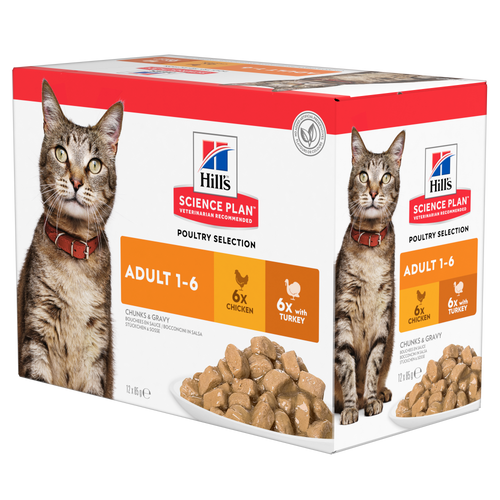

Tender chicken chunks in gravy for cats, with L-carnitine and fewer calories for ideal weight management. Packed with high-quality protein, omega-6s, and vitamin E for shiny fur and healthy skin.
Related articles

Chocolate is known to be poisonous for dogs, but it can also be toxic for cats. Learn why chocolate is bad for cats & what to do if she's eaten it.

Learn how to make homemade cat treats that are healthy for your pet with this recipe from Hills Pet Nutrition.

From essential vitamins & minerals to different types of meat, learn what to look for when choosing the best cat food for your feline.

There are three common ways to feed a cat. Each way has its advantages and disadvantages.

Put your cat on a diet without them knowing
Our low calorie formula helps you control your cat's weight. It's packed with high-quality protein for building lean muscles, and made with purposeful ingredients for a flavourful, nutritious meal. Clinically proven antioxidants, Vitamin C+E, help promote a healthy immune system.
Put your cat on a diet without them knowing
Our low calorie formula helps you control your cat's weight. It's packed with high-quality protein for building lean muscles, and made with purposeful ingredients for a flavourful, nutritious meal. Clinically proven antioxidants, Vitamin C+E, help promote a healthy immune system.

